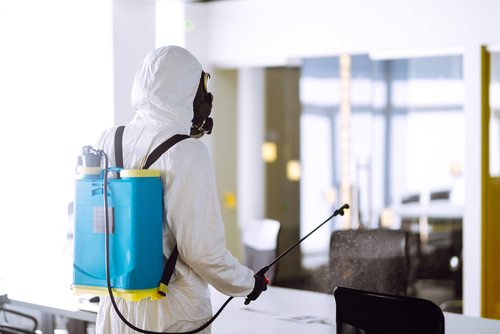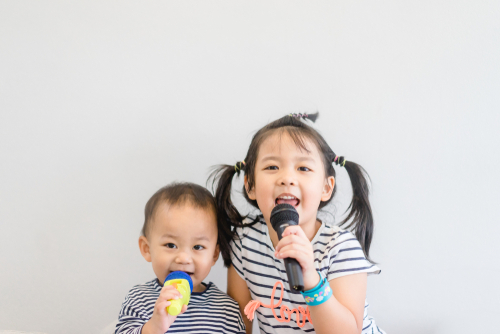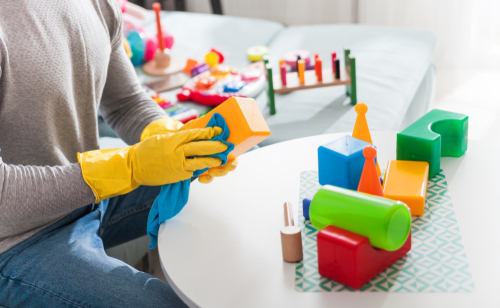
Disinfection Methods and Their Applications
August 1, 2023
Restaurant Disinfection: Ensuring Safe Dining Experiences
August 29, 2023Child-Friendly Disinfection: Safe Practices for Play Areas

Child-Friendly Disinfection Safe Practices for Play Areas
Child-Friendly Disinfection: Safe Practices for Play Areas. Childhood is a time of exploration, learning, and play.
Ensuring that play areas are clean and free from harmful germs is essential for safeguarding children’s health.
The state of play surfaces and toys directly impacts children’s well-being, making child-friendly disinfection practices crucial.
Unclean play areas and toys can harbor harmful germs and pathogens threatening children’s health.
Children are naturally curious and interact closely with their environment, increasing their infection vulnerability.
This article delves into the importance of child-friendly disinfection methods to create safe and hygienic play environments.
Read on – Child-Friendly Disinfection: Safe Practices for Play Areas:
Understanding Children’s Vulnerability to Germs
Children’s immune systems are still developing, making them more susceptible to infections.
Their behaviors, such as putting objects in their mouths and lack of consistent hygiene practices, contribute to their increased vulnerability.
How unclean play areas can contribute to the spread of germs among children?
Unclean play areas become breeding grounds for germs that children can come into contact with through direct touch or by putting objects in their mouths.
Contaminated surfaces and toys can lead to the rapid spread of illnesses among children.

Essential Cleaning vs. Harmful Chemicals
Importance of Non-Toxic Disinfection
Exposure to harsh chemical disinfectants can pose health risks to children, including skin irritation, respiratory issues, and potential ingestion hazards. It’s crucial to prioritize non-toxic disinfection methods.
Child-friendly disinfection methods prioritize the safety and well-being of children while effectively eliminating germs. These methods focus on using non-toxic ingredients and gentle yet thorough approaches.
Child-Safe Cleaning Agents
Natural disinfectants such as vinegar, hydrogen peroxide, and mild soap are safe for disinfecting play areas. These ingredients effectively eliminate germs without leaving harmful residues.
Creating child-safe cleaning solutions is easy and cost-effective. For instance, mixing water and vinegar in a spray bottle creates an effective disinfectant for surfaces and toys.
Establishing a Disinfection Routine
Consistency is key to maintaining a clean play environment. Establish a routine that includes daily cleaning of high-touch surfaces and weekly thorough disinfection of play areas and toys.
Teaching children the importance of cleanliness and involving them in cleaning fosters a sense of responsibility and hygiene awareness from a young age.
Proper Cleaning Techniques

Cleaning Soft Play Surfaces
Soft surfaces such as cushions and plush toys can be gently cleaned using mild soap and water or natural disinfectants. Avoid harsh chemicals that may leave residues harmful to children.
Baking soda can be sprinkled on soft surfaces to absorb odors before vacuuming. For stains, consider spot-cleaning with a mixture of water and mild soap.
Disinfecting Hard Surfaces
For hard surfaces like plastic toys and tables, choose child-safe disinfectants that are effective against germs and pathogens. Look for products with natural ingredients.
A step-by-step guide to proper disinfection techniques
- Cleaning: Remove dirt and debris from the surface.
- Disinfecting: Apply a child-safe disinfectant and let it sit for the recommended contact time.
- Rinsing: Wipe the surface with a damp cloth to remove any residue.
Disinfecting Toys

Toy Material Considerations
Toys come in various materials, each with different disinfection needs. Consider the material of the toy when choosing disinfection methods to avoid damage.
Prioritize disinfection methods that effectively eliminate germs without causing harm to the toy’s material or structure.
Submerging vs. Surface Disinfection
Soaking toys in a child-safe disinfectant solution can ensure thorough disinfection, especially for toys that children frequently put in their mouths. Surface disinfection is suitable for toys that cannot be submerged.
Follow manufacturer instructions for disinfecting toys, and rinse thoroughly if soaking to remove any residual disinfectant.
Child-Friendly Disinfection Products
Several brands offer child-friendly disinfectants that prioritize safety and effectiveness. Look for products with natural ingredients and clear labeling of child safety.
Read product labels carefully to verify that the disinfectant is safe for children and does not contain harmful chemicals. Look for certifications and endorsements from relevant authorities.
Promoting Hygiene Among Children

Teaching Proper Handwashing
Handwashing is a fundamental hygiene practice. Teach children the proper technique of washing hands with soap and water for at least 20 seconds.
Make handwashing enjoyable by using colorful soap, singing songs, or incorporating a timer for added engagement.
Encouraging Clean Play Habits
Explain to children the importance of clean play areas and how it contributes to their well-being. Encourage them to put away toys after playtime.
Incorporate cleaning and disinfection as part of playtime routines. For instance, encourage children to “clean” their toys before putting them away.
Frequently Asked Questions (FAQs)
Are store-bought disinfectants safe for children’s play areas?
Store-bought disinfectants can be safe for children’s play areas if they are labeled as child-friendly and non-toxic. Always read product labels and choose those without harsh chemicals.
How often should I disinfect my child’s play area and toys?
High-touch surfaces should be cleaned and disinfected daily, while thorough play areas and toys disinfection can be done weekly or as needed.
Can I use vinegar to clean and disinfect children’s toys?
Yes, vinegar is a safe and natural disinfectant that can be used to clean and disinfect children’s toys. Dilute vinegar with water for effective disinfection.
Are there any disinfection methods that do not require chemicals?
Yes, there are non-chemical disinfection methods such as steam cleaning, using hot water, and exposure to sunlight. These methods are safe for children’s play areas.
What are some signs that a toy needs thorough cleaning?
Toys that have visible dirt, stains, or an unpleasant odor should be thoroughly cleaned and disinfected. Pay attention to toys that children frequently put in their mouths.
Should I avoid certain materials when choosing toys for easy disinfection?
Opt for toys with materials that can be easily cleaned and disinfected, such as plastic or washable fabric. Avoid toys with intricate designs that may be difficult to clean.
How do I disinfect plush toys without damaging them?
Gentle steam cleaning or surface disinfection with a child-safe disinfectant can effectively disinfect plush toys without causing damage.
Is it safe to use essential oils for disinfection around children?
Some essential oils can be used for disinfection around children, but caution is advised. Certain essential oils may cause allergies or skin sensitivities. Dilution and patch testing are recommended.
Child-Friendly Disinfection: Safe Practices for Play Areas – Conclusion

Child-friendly disinfection practices play a crucial role in maintaining a clean and safe play environment for children.
By understanding the vulnerability of children to germs and using non-toxic disinfection methods, parents and caregivers can ensure that play areas and toys promote health and well-being.
Implementing child-friendly disinfection practices prevents the spread of germs and instills hygienic habits in children.
By promoting proper handwashing, involving children in cleaning routines, and choosing safe disinfection methods, parents and caregivers contribute to children’s overall health and happiness.
Are you seeking professional and reliable disinfection services in Singapore? Contact us today!



